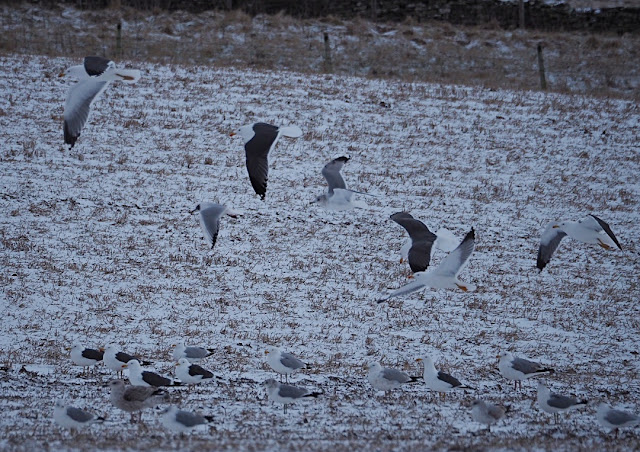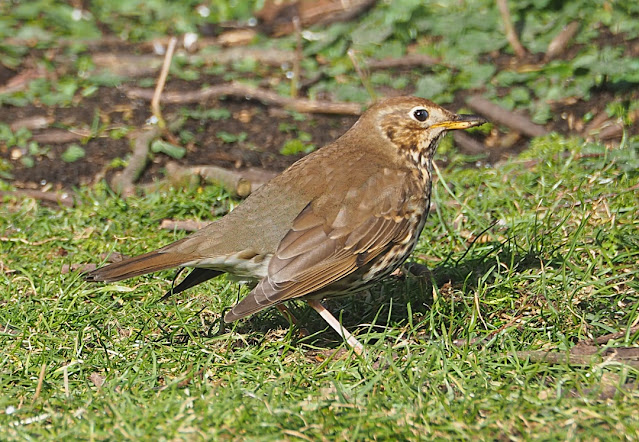The snow returned overnight after a thaw yesterday. I think this is its last gasp.
Some serious gull watching is now available from the warmth of the kitchen, or at least it is whenever the sheep are fed. I'm speculating: Ice and Glauc should surely arrive, indeed overdue; I've never had Med Gull on the patch that would be nice; what about something more exotic? My all time, several dips, most wanted gull is Franklin's. Laughing is a tad more likely and would also be a found tick but I'd be cock-a-hoop with almost any new gull to be honest.
 |
| So far just Black-headed, Common, Greater Black-backed, Herring and Lesser Black-backed Gulls. |
|
|
|
|
 |
Adult Lesser Black-backed and Herring Gulls.
|
 |
Lesser Black-backed Gull adult.
|
 |
2cy Lesser Black-backed Gull.
|
Also enjoying the extra food along with the sheep and the gulls are various corvids, the Skylark flock, now 18, Redwings and Blackbirds.
 |
| Redwing. |
 |
| Blackbird. | |
The Otter was active overnight down our track.
 |
Otter tracks in the snow.
|
This morning the Ravens were very agitated when I went round the back. I would think there is a nest but I can't see it.
 |
Agitated Raven.
|
First Pied Wag or the year today, a surprise in this weather. The Lesser Redpoll and the rest of the gang are still around the feeders. A Song Thrush performed nicely on the back grass.
 |
Song Thrush.
|
An outing to the crow roost yesterday afternoon produced four Hen Harriers, a Merlin, a Water Rail, a small flock of Fieldfares, rather a lot of gulls, a Snipe and a Woodcock. Possibly the Rough-legged Buzzard was there, glimpsed distantly, and 125 Hoodies (crows anyway) flew to roost but I couldn't find the pre-roost gathering, not in the usual spots anyway.
A bit of an examination of the Rose in the conservatory found that I have managed to deal with the aphids but that the Red Spider Mite has survived the cold, indeed they are actively reproducing with eggs and some early instars. I used to work on the biological control of these, many years ago, we used the predatory mite Phytoseiulus persimilis on cucumber and tomato crops, but we also used it on plastic tunnel grown strawberries which was innovative at the time. I have tried introducing them onto the rose in the past but the temperatures here get too cold for them, too much variation, even in summer.
 |
| Tetranychus urticae. |



















No comments:
Post a Comment